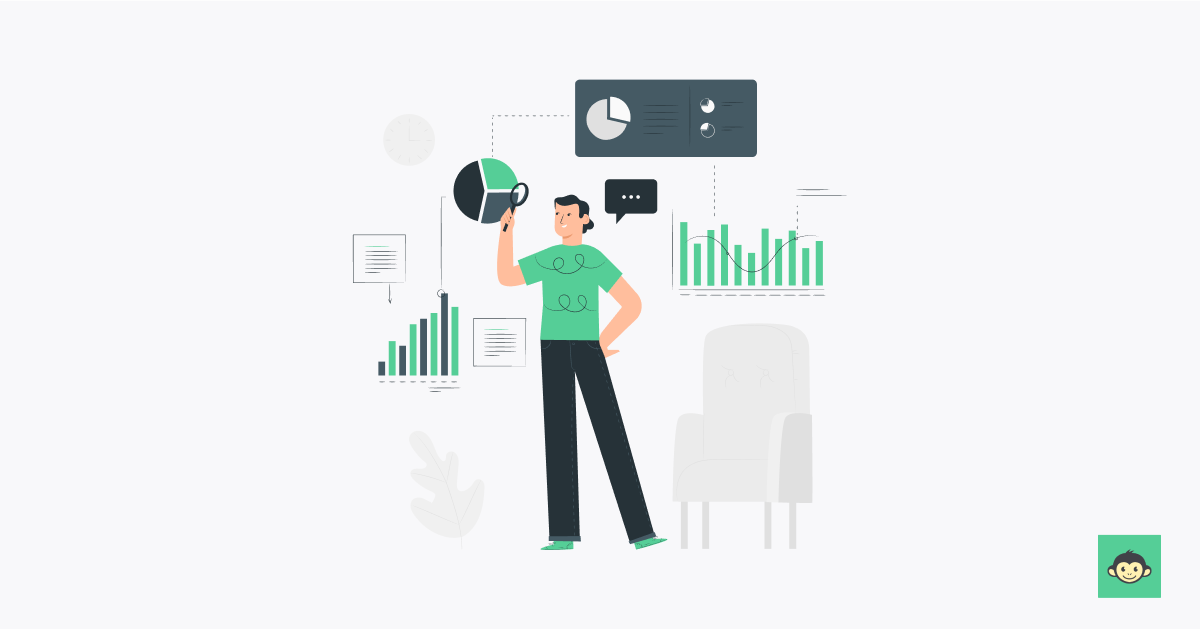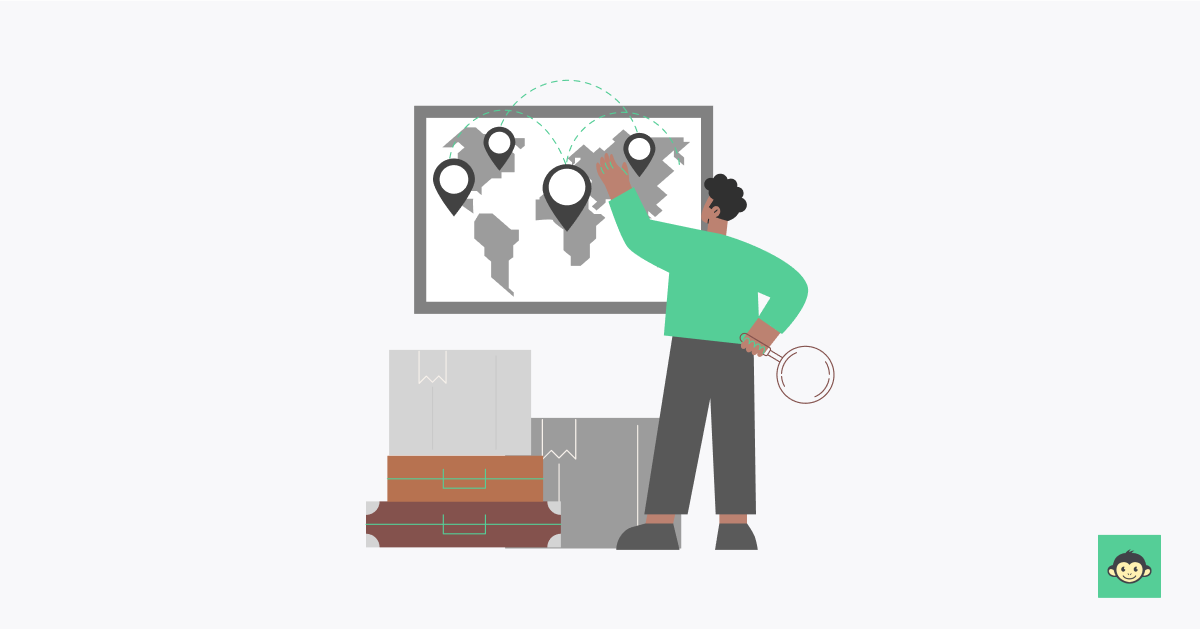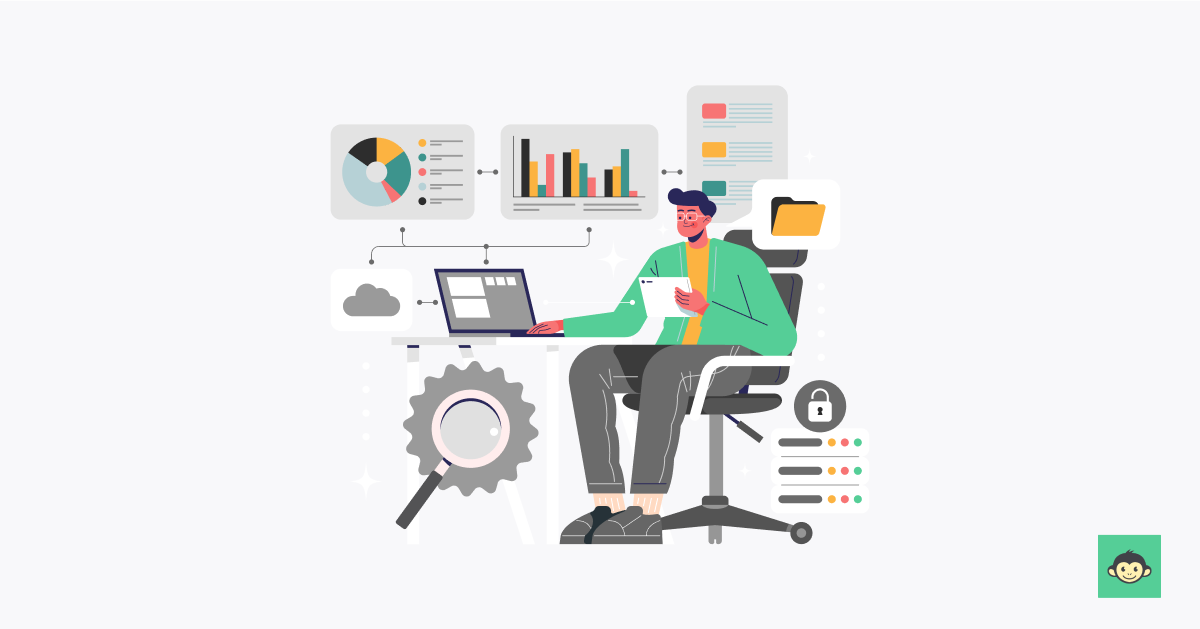What are DEI benchmarks: Definition, examples, and benefits of measuring DEI metrics in 2024

In the fast-paced landscape of modern businesses, it's not just about hitting targets; it's about creating an environment where every voice is heard, every idea is valued, and every team member feels like a crucial part of the company's grand narrative. That's where DEI benchmarks step onto the stage with a flourish, armed with the tools to turn your workplace into a thriving community.
But hold on, we're not here to throw around corporate jargon or drown you in technicalities. No sir! This blog is your passport to understanding Dei benchmarks like never before. It will help you build employment practices that put your organization at the top.
Think of it as your backstage pass to the concert of productivity. We're not just talking about numbers here; we're talking about creating an atmosphere where your team doesn't just meet expectations but surpasses them with style.
It's about fostering an environment where your people aren't just colleagues; they're a family, each member bringing their A-game to the table.
What is DEI in the workplace?

DEI stands as a beacon of progress and unity. DEI, an acronym for Diversity, Equity, and Inclusion, encapsulates the essence of fostering a work environment that champions individual differences, ensures fairness, and embraces everyone in the fold.
- Diversity is the vibrant tapestry of backgrounds, perspectives, and experiences that each team member brings to the table.
- Equity is the unwavering commitment to providing equal opportunities, acknowledging that each person's journey is unique.
- Inclusion is the powerful glue that binds it all together, creating a sense of belonging for every employee, irrespective of their background or identity.
Together, DEI forms the backbone of a workplace where innovation thrives, collaboration flourishes, and every voice finds resonance. It's not just a corporate buzzword; it's a cultural shift towards a more vibrant, harmonious, and forward-thinking professional landscape.
In fact, certain industries, like the energy industry, is in more need of DEI initiative than ever before. Since 2021, the percentage of women working in the industry has increased from 21% to just 23%, reports BCG.
Why does DEI matter in the first place?
DEI matters because it transforms workplaces into dynamic hubs of creativity and productivity. By embracing diversity, ensuring equity, and fostering inclusion, organizations tap into a rich reservoir of perspectives and talents.
This not only enhances innovation but also creates a culture where every individual feels valued and empowered, contributing their best to the collective success of the team.
DEI isn't just a checkbox; it's the driving force behind workplaces that thrive on collaboration, adaptability, and a shared sense of purpose. In essence, it's not just about doing what's right; it's about building a workplace where everyone has an equal opportunity to shine, and the collective brilliance of diverse minds propels the organization forward.
What are DEI metrics?

DEI metrics guide organizations toward a more inclusive and equitable future. These metrics, grounded in the principles of Diversity, Equity, and Inclusion, provide tangible measurements of an organization's progress in fostering a diverse workforce and an inclusive workplace culture.
Rather than merely tracking numbers, DEI metrics delve into the heart of organizational dynamics.
Diversity metrics assess the representation of different demographics within certain groups in the workforce, considering factors such as gender identity, ethnicity, and age. Equity metrics gauge the fairness in opportunities, promotions, and compensation, ensuring that every individual has an equal shot at success.
Inclusion metrics delve into the intangibles, measuring the sense of belonging and psychological safety experienced by employees.
These metrics are more than DEI data points; they're a reflection of a company's commitment to creating an environment where everyone, regardless of background, can thrive. By regularly analyzing and acting upon DEI metrics, organizations not only stay accountable but also drive meaningful change, fostering a workplace that celebrates individuality and cultivates collective success.
How do you measure DEI effectiveness?

Measuring the effectiveness of Diversity, Equity, and Inclusion (DEI) initiatives requires a nuanced approach that goes beyond raw numbers. It involves assessing the impact of these efforts on the organizational culture, employee experiences, and overall business performance.
Here's a holistic perspective on measuring DEI effectiveness:
1. Diversity metrics
- Track demographic representation across all levels of the organization.
- Analyze hiring, promotion, and turnover rates for different groups.
- Assess the diversity of talent pools in recruitment.
2. Equity metrics
- Examine pay equity to ensure fair compensation across genders and ethnicities.
- Evaluate the distribution of opportunities and promotions to identify any disparities.
- Monitor the accessibility of professional development programs.
3. Inclusion metrics
- Conduct regular employee surveys to gauge the sense of belonging and inclusion.
- Measure participation in employee resource groups and mentorship programs.
- Assess the effectiveness of training programs in fostering an inclusive culture.
4. Employee management
- Evaluate overall employee satisfaction and engagement.
- Examine feedback mechanisms and employee suggestions for improvements.
- Measure the impact of DEI initiatives on workplace morale and collaboration.
5. Leadership Involvement
- Assess the commitment and involvement of leadership in promoting DEI.
- Monitor diversity within leadership positions.
- Evaluate the effectiveness of communication regarding DEI goals.
6. Business impact
- Analyze the correlation between DEI initiatives and business performance.
- Measure customer and client satisfaction in relation to diversity initiatives.
- Examine the organization's reputation and brand perception in the market.
7. Continuous improvement
- Establish a feedback loop for ongoing evaluation and improvement.
- Regularly revisit and update DEI goals based on evolving organizational needs.
- Encourage open dialogue and communication channels for employees to voice concerns.
Effectively measuring DEI is an ongoing process that requires a combination of quantitative and qualitative assessments. It's not just about meeting quotas but creating a workplace where diversity and inclusion are ingrained in the company and organizational DNA, fostering an environment where everyone can thrive.
What are DEI benchmarks?
Diversity, equity, and inclusion benchmarks serve as the North Star for organizations committed to advancing Diversity, Equity, and Inclusion (DEI) initiatives. These benchmarks are key performance indicators and standards that allow companies to measure their progress and compare their efforts against industry best practices.
They provide a roadmap for cultivating a workplace that not only has diverse talent and reflects the diversity of the world but actively promotes global diversity and an inclusive and equitable environment.
Benefits of benchmarking in DEI

Benchmarking in Diversity, Equity, and Inclusion (DEI) is akin to having a compass in uncharted waters—it provides direction, insights, and a clear path toward building a workplace that values diversity and inclusion. Here are the significant benefits of benchmarking in the realm of DEI:
Strategic alignment
In tandem with industry standards and best practices, benchmarking provides a compass for organizations to navigate the complexities of fostering a more inclusive culture. It's a roadmap allowing for deliberate, well-informed decisions that align with broader industry trends.
Gap analysis for improvement
Beyond goal-setting, benchmarking functions as a powerful lens, offering a nuanced view of an organization's DEI landscape. Through gap analysis, organizations can pinpoint areas for improvement, identifying discrepancies between current practices and benchmarks.
This introspective process is not just about addressing shortcomings; it's a catalyst for innovation and growth.
Enhancing competitiveness and positive brand image
Effective DEI benchmarking naturally enhances competitiveness and shapes a positive brand image. Organizations that meet or exceed DEI and diversity benchmarks stand out in the market, attracting top-tier talent and customers who increasingly prioritize diversity.
The alignment with societal expectations and a commitment to social responsibility become integral components of an organization's identity, fostering a positive brand perception.
Reinforcing accountability
DEI benchmarking reinforces accountability—both internal and external. By establishing measurable standards, organizations hold themselves accountable for their DEI initiatives. Transparent benchmarking practices build trust among employees, showcasing a commitment to fairness and equity.
It becomes a tool for not only meeting legal requirements but also for mitigating risks and building a workplace culture grounded in trust and accountability.
Fostering innovation and creativity
Moreover, DEI benchmarking practice is a catalyst for fostering innovation and creativity within an organization.
Recognizing the value of diverse perspectives, benchmarking encourages environments that stimulate innovation and creativity. It is a strategic investment in the adaptability of an organization, ensuring that DEI strategies evolve in response to changing demographics and societal expectations.
Employee development and retention
On the employee front, DEI benchmarking supports the holistic development, advancement, and retention of talent. Fair opportunities for growth and advancement become more tangible when organizations use benchmarking insights to address gaps. Retention strategies, deeply rooted in understanding and meeting the diverse needs of the workforce, become more effective.
What are the objectives of evaluating DEI benchmarks?

The evaluation of Diversity, Equity, and Inclusion (DEI) benchmarks serves a multifaceted set of objectives, each contributing to the overarching goal of fostering a workplace and employee experience that is not only diverse but also equitable and inclusive.
Measure progress and effectiveness
Evaluation of DEI benchmarks is a critical tool to measure the progress an organization has made in achieving its DEI goals. It provides insights into the effectiveness of implemented initiatives, indicating whether they are creating a more inclusive and equitable workplace.
Identify areas for improvement
The evaluation process pinpoints specific areas where the organization can enhance its DEI efforts. By conducting a thorough analysis, it identifies gaps between current practices and established benchmarks, guiding the way for targeted improvements.
Inform strategic decision-making
Insights derived from DEI benchmark evaluation inform strategic decision-making related to organizational policies and programs. The data guides the development of new initiatives, ensuring they align with the organization's overarching DEI goals.
Enhance accountability
The evaluation reinforces organizational accountability for DEI outcomes. By establishing clear standards against which progress can be measured promotes transparency and a sense of responsibility for achieving and sustaining positive change.
Benchmark against industry standards
DEI benchmark evaluation involves comparing the performance reviews an organization's efforts against industry benchmarks and best practices. It helps identify areas of leadership as well as areas needing improvement relative to industry peers.
Ensure fairness and equity
DEI benchmark evaluation assesses the organization's commitment to equity in areas such as compensation, promotions, and other advancement opportunities. It identifies and rectifies any disparities, ensuring a fair and just workplace for all.
Does DEI benchmarks differ by industry and geography?

Diversity, Equity, and Inclusion (DEI) benchmarks exhibit variations across industries and geographical locations. The distinctive characteristics, demographics, and cultural nuances inherent to different industries and regions influence the specific benchmarks and best practices adopted by organizations.
What proves effective in one industry or geographic area may require adjustments to align with the unique challenges and opportunities present elsewhere. Therefore, organizations keen on promoting DEI initiatives must be attuned to the specific context of their industry and geographic location, ensuring that their benchmarks are tailored to address the diverse needs and expectations of their workforce and community.
This localized approach enhances the relevance and impact of DEI initiatives, fostering a more inclusive and equitable workplace that resonates with the particular dynamics of each industry and region.
How to approach the DEI benchmarks data?

Approaching Diversity, Equity, and Inclusion (DEI) benchmarks data requires a strategic and thoughtful process. Start by collecting a comprehensive set of data, considering both quantitative metrics and qualitative insights from employee feedback.
Before delving into the data, understand the unique context of your organization, industry, and geographic location. This contextual understanding is crucial for tailoring your approach to the specific challenges and opportunities present.
Take a holistic view of the data, identifying disparities and areas of improvement. Collaborate across departments to ensure diverse perspectives contribute to the analysis. Regularly review and iterate on your strategies, recognizing that DEI benchmarks are dynamic.
Transparently communicate findings to stakeholders and translate insights into actionable goals, setting measurable objectives for continuous improvement. Additionally, ensure compliance with legal requirements, prioritize data security, and adhere to ethical standards in handling and reporting data. This approach ensures that the organization moves toward meaningful and sustainable improvements in its DEI initiatives.
What are DEI benchmarks goals, and how to set them?
Setting effective Diversity, Equity, and Inclusion (DEI) benchmark goals is essential for organizations committed to gender diversity and fostering an inclusive workplace. The goals should be specific, measurable, achievable, relevant, and time-bound (SMART). Here's a guide on defining and setting DEI benchmark goals:
- Define clear diversity objectives here: Begin by defining clear and specific DEI objectives aligned with your organization's values and mission. Identify the key areas you want to address, such as increasing diversity in leadership or improving pay equity.
- Align with organizational values: Ensure that your DEI goals align with the core values and long-term vision of the organization. This alignment enhances commitment and integration of DEI initiatives into the organizational culture.
- Assess current state: Conduct a thorough assessment of your organization's current DEI landscape. Analyze demographic data, employee experiences, and existing policies to identify strengths, weaknesses, opportunities, and threats.
- Set measurable targets: Establish measurable targets that allow you to track progress over time. Whether it's increasing the representation of underrepresented groups or reducing pay gaps, quantifiable metrics provide a clear benchmark for success.
- Involve key stakeholders: Involve key stakeholders in the goal-setting process. Collaborate with employees, leadership, and DEI advocates to gather diverse perspectives and ensure a comprehensive understanding of the organization's needs and aspirations.
- Prioritize inclusive leadership: Prioritize goals that promote inclusive leadership. Encourage diverse representation in decision-making roles and foster an inclusive culture attracting diverse candidates at all levels of the organization.
- Address equity: Address equity in opportunities, hiring pipeline promotions, and compensation. Set goals to ensure fair and unbiased practices throughout the employee lifecycle.
- Establish timelines: Set realistic timelines forthe hiring process and achieving your DEI benchmark goals. Having clear deadlines creates a sense of urgency and accountability.
- Foster continuous improvement: Embrace a culture of continuous improvement by regularly reviewing performance ratings and updating your DEI goals. Stay agile and adapt to changing organizational needs and external factors.
- Communicate transparently: Transparently communicate your DEI goals to all stakeholders. Ensure that employees understand the objectives, progress, and the collective role they play in achieving the organization's DEI aspirations.
- Measure and evaluate: Implement robust measurement mechanisms to evaluate progress against set goals. Regularly assess your organization's performance and adjust strategies accordingly.
- Celebrate successes and learn from challenges: Acknowledge and celebrate successes along the way. Equally important, learn from challenges and use setbacks as opportunities to refine your approach and strategies.
7 DEI benchmarks goals examples to get inspiration from

here are seven examples of Diversity, Equity, and Inclusion (DEI) benchmark goals that organizations can consider to inspire their initiatives:
1. Increase representation in leadership
Achieve a 15% increase in the representation of underrepresented groups in leadership positions within the next two years. This aims to further diversity data and create a more diverse and inclusive decision-making structure.
2. Achieve pay equity
Close the gender pay gap by 10% within the next fiscal year. Implement transparent salary structures and conduct regular pay equity assessments to ensure fair compensation across all demographics.
3. Enhance workforce diversity
Increase overall workforce diversity by 20% in the next three years. This involves targeted recruitment efforts for diverse candidates, inclusive hiring practices, and partnerships with organizations promoting diverse talent.
4. Foster inclusive leadership training
Implement a comprehensive, inclusive leadership training program for all managers within the next six months. The aim is to equip HR leaders with the skills to foster an inclusive and equitable team culture.
5. Establish employee resource groups (ERGs)
Launch at least three Employee Resource Groups (ERGs) focused on different aspects of diversity, such as ethnicity, gender, and LGBTQ+ inclusion. This encourages a sense of belonging among diverse suppliers and provides a platform for underrepresented voices.
6. Implement bias-free recruitment practices
Eliminate unconscious bias in recruitment processes. Implement blind resume screening and standardized interview questions for all candidates to ensure fair and equitable hiring practices.
7. Enhance the accessibility and accommodations
Achieve full accessibility and accommodation compliance within the organization in the next year. This includes physical and digital accessibility measures, ensuring an inclusive environment for employees with diverse needs.
Role of a DEI software to improve engagement and retention in your organization
Diversity, Equity, and Inclusion (DEI) software is a strategic asset in improving engagement and retention within organizations. It empowers companies to gather and analyze data on diversity metrics, employee experiences, and inclusion efforts, providing valuable insights for informed decision-making.
Through features like employee surveys, the software establishes a real-time feedback loop, enabling organizations to address concerns promptly and enhance engagement.
Moreover, DEI software offers inclusive learning and development modules, fostering a workplace culture where employees can enhance their understanding of diversity issues. This not only contributes to a more inclusive environment but also positively impacts the engagement and retention of diverse employees.
The software's goal-tracking capabilities ensure organizations remain accountable for their diversity and inclusion objectives, instilling a sense of purpose among employees.
Facilitating communication and collaboration around DEI efforts, DEI software provides a centralized platform for sharing updates and success stories, fostering a sense of community.
Features supporting accessibility and accommodation demonstrate a commitment to inclusivity, positively influencing retention. Recognizing contributions to diversity and inclusion through the software reinforces positive behaviors and boosts engagement.
Additionally, benchmarking tools and access to best practices contribute to continuous improvement, aligning organizations with industry standards. In essence, DEI software serves as a holistic toolset, fostering an environment where employees feel engaged, valued, and committed to the organization's inclusive ethos.
Conclusion
Diversity, Equity, and Inclusion (DEI) benchmarks are vital compass points for organizations navigating the path to a more inclusive future. They provide a structured framework for assessing progress, fostering accountability, and promoting continuous improvement.
By setting clear goals, leveraging data insights, and embracing DEI software, organizations can not only meet industry standards but cultivate workplaces where diversity is celebrated, equity is embedded, and employees are engaged for the long term. DEI benchmarks are not just metrics; they are the foundation for creating workplaces that thrive on diversity and inclusion.



